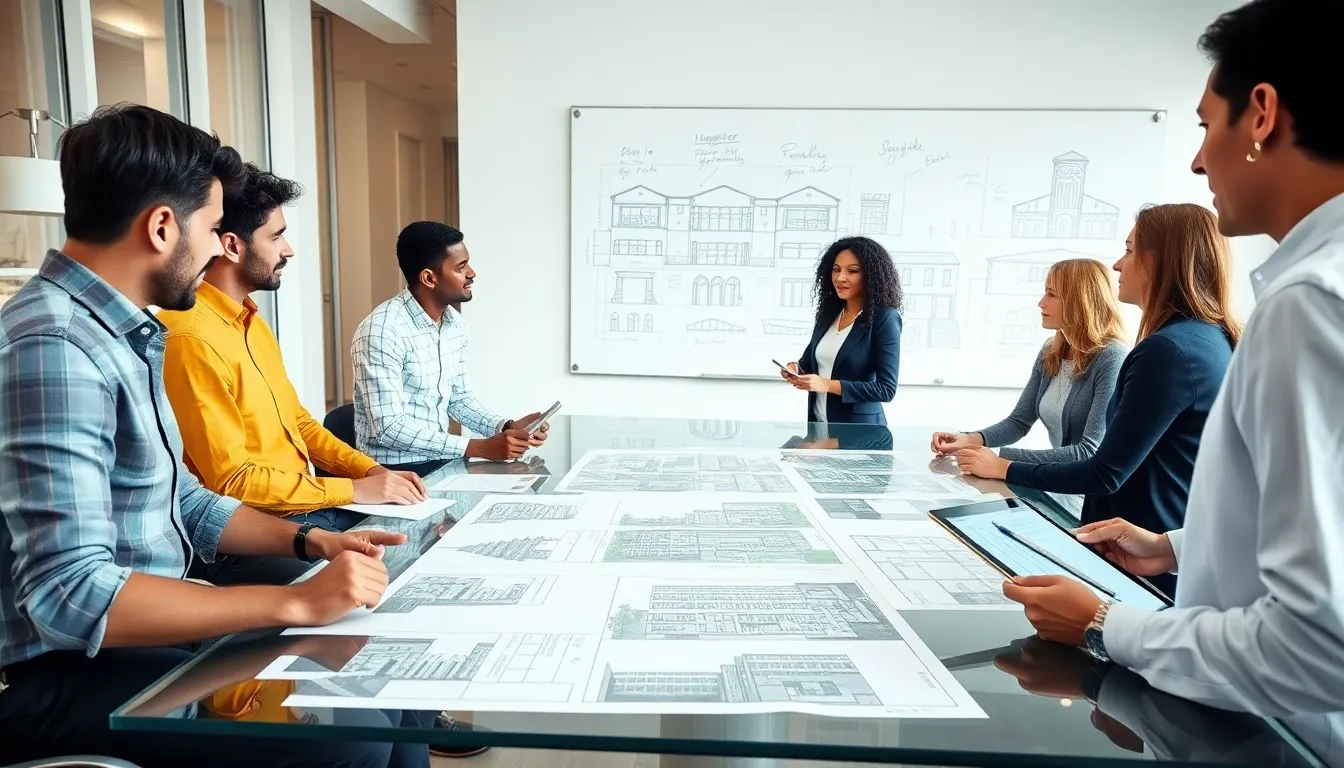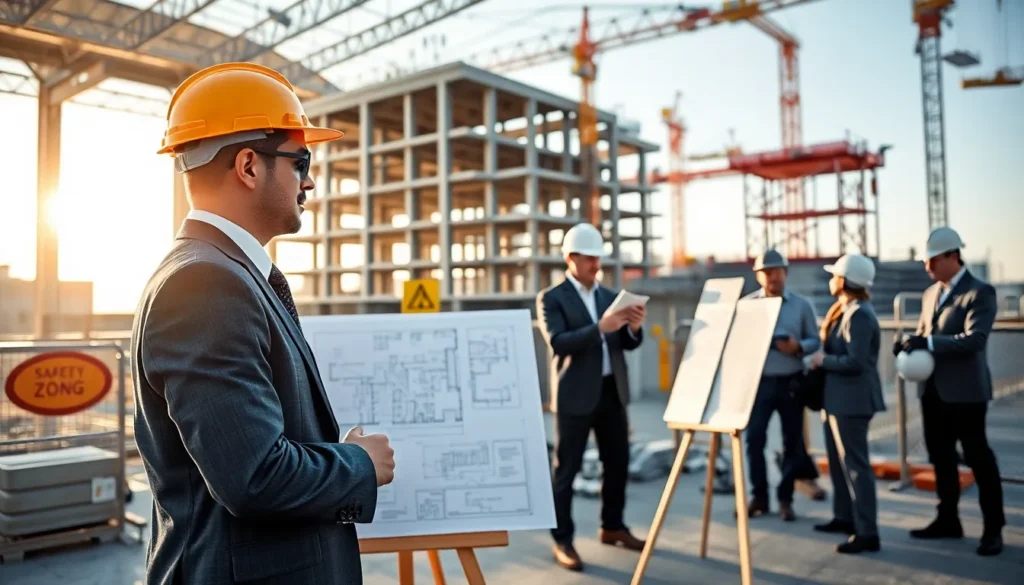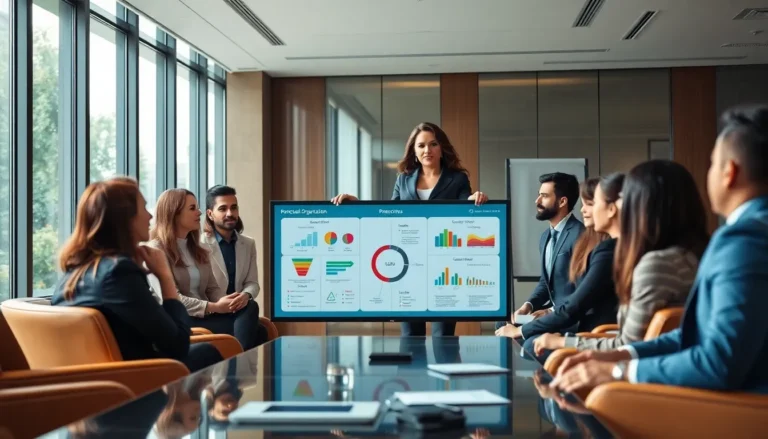When it comes to commercial and institutional building construction, the challenge can feel daunting. Whether you’re eyeing that shiny new office building or a sprawling educational facility, the world of construction is like a complex board game, filled with rules, strategizing, and a sprinkle of unexpected twists. This article unveils the secrets of these building types, providing you with insights that make you feel like the construction guru you’ve always aspired to be. So, grab your hard hat, and let’s break ground on this journey.
Table of Contents
ToggleUnderstanding Commercial And Institutional Building Types

Commercial buildings encompass structures designed for profit-making enterprises. They include offices, retail spaces, and hotels. Institutional buildings, on the other hand, serve government, educational, and healthcare purposes. Schools, hospitals, and government offices fall under this category. Each type of building has unique design specifications and functional requirements, reflecting their intended use.
Recognizing the distinction is crucial for architects and developers. For instance, while a tech startup may thrive in a modern commercial office space, a public library requires a more subdued atmosphere conducive to study and research. Understanding the nature of these buildings impacts everything from zoning regulations to facility operations.
Key Differences Between Commercial And Institutional Buildings
At first glance, commercial and institutional buildings may seem similar. But, a closer look reveals distinct differences. Commercial buildings typically prioritize profit. They are created with the intent to generate revenue, focusing on maximizing space efficiency and tenant appeal. Institutional buildings, in contrast, emphasize public service and community benefit. Their design often prioritizes safety, accessibility, and sustainability over profitability.
The user experience plays a significant role in design choices. Commercial spaces feature open layouts to foster collaboration. Meanwhile, institutional spaces often include specialized areas designed for specific functions, such as patient care in hospitals or learning zones in schools.
The Construction Process: Planning And Design Phase
The planning and design phase is the backbone of any successful building project. Initially, developers collaborate with architects and engineers to create blueprints that reflect their vision. This phase involves numerous essential steps, including site assessments, budgeting, and timelines.
Developers consider local zoning laws, environmental factors, and even community input. After conceptualization, details such as layouts, materials, and systems are outlined. Feedback from stakeholders ensures the design meets everyone’s needs, bridging the gap between functionality and aesthetics in commercial and institutional spaces.
Materials And Technologies In Modern Construction
Modern construction leverages innovative materials and technologies that enhance efficiency and sustainability. From high-strength concrete to energy-efficient glass, the chosen materials affect structural integrity and practicality. Sustainable materials, such as recycled steel and reclaimed wood, are gaining traction in the industry.
Also, technology plays a transformative role. Building Information Modeling (BIM) is a game-changer, allowing architects and engineers to visualize projects before construction even begins. Incorporating smart technologies, like energy management systems, further optimizes building operations.
Regulatory Aspects And Compliance Requirements
Navigating regulatory requirements is crucial in construction. Every project must adhere to building codes, safety standards, and zoning laws. These regulations vary by location but generally aim to ensure safety, accessibility, and environmental compatibility. For example, the Americans with Disabilities Act (ADA) mandates accessibility features in public buildings, including wheelchair ramps and accessible restrooms.
Projects often undergo inspections at various stages to ensure compliance. Not only do developers need to remain informed about the latest codes, but they must also be prepared for potential changes during the construction process. Adjusting to regulations can be challenging but is vital for project success.
Sustainability And Green Building Practices
Sustainability is increasingly becoming a focus in commercial and institutional construction. Green building practices aim to minimize environmental impact and promote efficiency. This includes strategies like optimizing energy use and selecting eco-friendly materials.
Certification programs, such as LEED (Leadership in Energy and Environmental Design), provide frameworks for sustainable building practices. Incorporating renewable energy sources, such as solar panels and wind turbines, is also now common in new constructions, further solidifying the commitment to sustainability.
Challenges In Commercial And Institutional Construction
No construction project comes without its hurdles. Common challenges in commercial and institutional construction include project delays, budget overruns, and labor shortages. Weather can pose additional obstacles, causing labor disruptions or postponing timelines.
Also, adapting to technological advancements can be daunting. Keeping up with new building methods, materials, and regulatory changes requires constant education and flexibility. These difficulties might seem overwhelming, but proactive planning and adaptability can significantly enhance project success.



